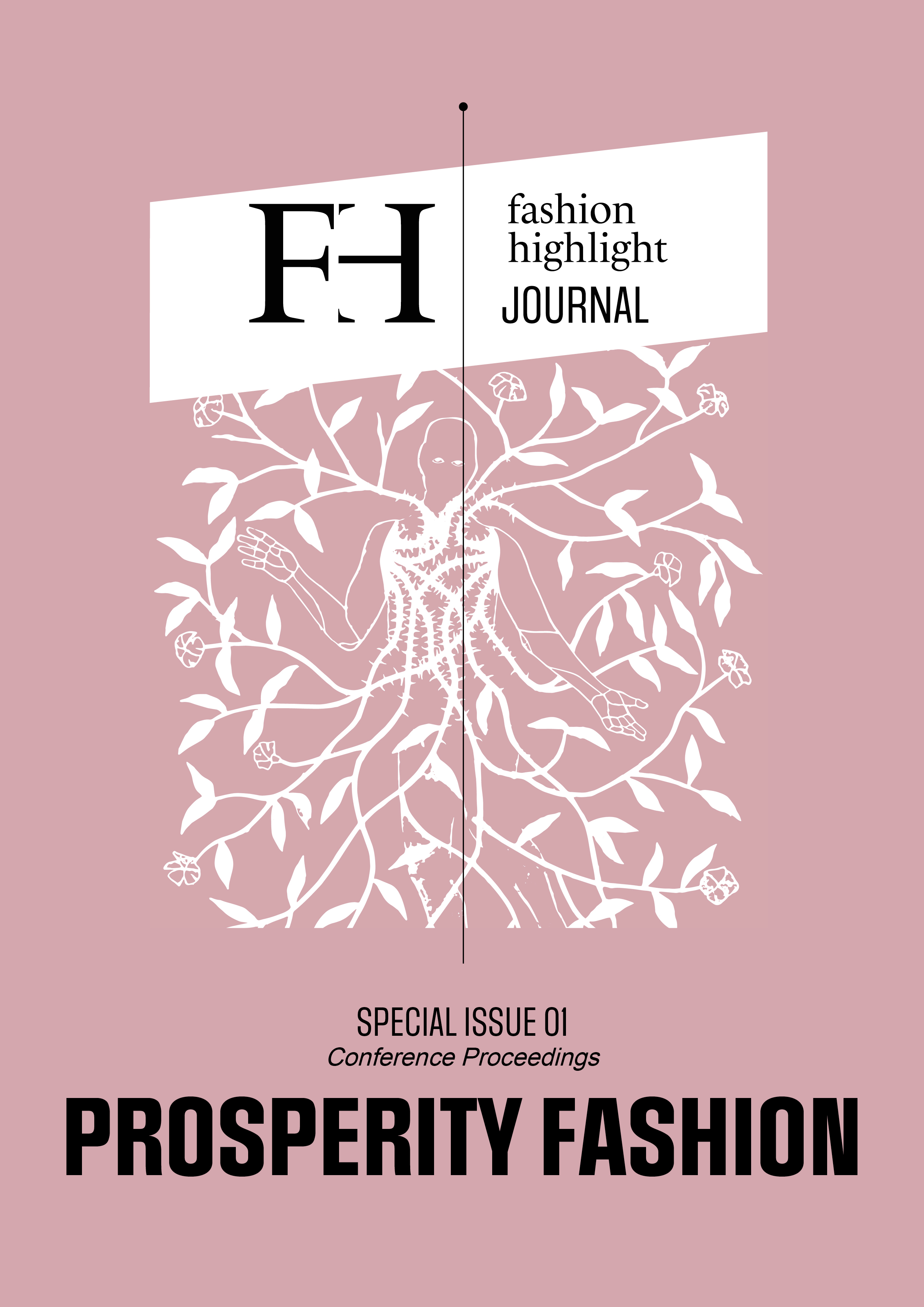Biodesign in Colombia: Turning Fashion Adversity into Innovation Amidst Socioeconomic Challenges
Published 14-07-2025
Keywords
- biodesign,
- Colombian fashion,
- sustainability,
- prosperity,
- biodiversity
How to Cite
Copyright (c) 2025 Carolina Obregon, Giovanna Danies Turano

This work is licensed under a Creative Commons Attribution 4.0 International License.
Abstract
Under the British dictionary and ChatGPT, **Prosperity** is defined in the context of today and the future in multiple dimensions, reflecting economic well-being and broader aspects of human development and societal health (OpenAI, 2024). As defined in contemporary and future contexts, prosperity encompasses sustainable growth, social equity, environmental stewardship, and adaptability to evolving global dynamics. This paper investigates how Colombia can navigate a prosperous fashion future amidst economic stagnation and the historical dominance of the Global North. By leveraging Colombia’s rich biodiversity, this research illustrates how biodesign can transform challenges into opportunities, reshaping the fashion industry through innovative practices and ethical considerations.Through qualitative analyses of perspectives from Colombian biodesigners and fashion designers, the study examines the potential of local resources, ancestral knowledge, and emerging technologies to redefine sustainability. The findings highlight biodesign as a transformative tool that bridges social equity, environmental sustainability, and economic viability, showcasing a roadmap for a regenerative and inclusive fashion ecosystem. This exploration underscores Colombia’s role as a model for integrating cultural heritage, biodiversity, and cutting-edge innovation into the global fashion narrative.
References
- Apparel—Colombia | Statista Market Forecast. (2024).
- Statista. http://frontend.xmo.prod.aws.statista.com/outlook/
- cmo/apparel/colombia?utm_source=chatgpt.com
- Calgaro, S. (2018, January 23). Flavia Aranha: Finding old
- and new avenues to sustainable fashion. Believe Earth. https://
- believe.earth/en/flavia-aranha-finding-old-and-new-avenuesto-sustainable-fashion/
- DANE. (2023). Poverty statistics for ethnic groups in Colombia. Retrieved December 23, 2024, from https://dane.gov.co.
- Duque Schumacher, A. G., Pequito, S., & Pazour, J. (2020). Industrial hemp fiber: A sustainable and economical alternative to cotton. Journal of Cleaner Production, 268, 122180. https://doi.org/10.1016/j.jclepro.2020.122180
- Dutch Design Week 2024, 19-27 October. (n.d.). Retrieved March 21, 2025, from https://ddw.nl
- El País. (2024, December 4). La trampa de la desigualdad en Colombia eclipsa la disminución de la pobreza. El País.
- https://elpais.com/america-colombia/2024-12-04/la-trampade-la-desigualdad-en-colombia-eclipsa-la-disminucion-de-lapobreza.html
- Fashion Industry | Invest in Colombia. (2024). https://investincolombia.com.co/en/sectors/fashion-industry
- Filippa K. (2023). Sustainability report 2023. https://www.filippa-k.com/on/demandware.static/-/Sites-FilippaK-Library/default/Sustainability_Report/FilippaK_Sustainability_Report_2023.pdf
- Insight Crime. (2024). Homicide rates in Latin America. Retrieved December 23, 2024, from https://insightcrime.org
- Jarpa, S. G., & Halog, A. (2021). Pursuing a Circular and Sustainable Textile Industry in Latin America. In M. Á.
- Gardetti & R. P. Larios-Francia (Eds.), Sustainable Fashion and Textiles in Latin America (pp. 105–130). Springer. https://doi.org/10.1007/978-981-16-1850-5_6
- Lease jeans made with recycled denim. (2019, March 25). MaterialDistrict. https://materialdistrict.com/article/lease-jeans-recycled-denim/
- Maroccolo, M. (n.d.). Maibe Maroccolo dyes & lakes. WILD PIGMENT PROJECT. Retrieved March 21, 2025, from https://wildpigmentproject.org/maibe-maroccolo-dyes-lakes
- Meisel, A. (2014). No reversal of fortune in the long run: Geography and spatial persistence of economic History, 32(3),
- –428.
- MUD Jeans | Circular Denim. (n.d.). MUD Jeans. Retrieved March 21, 2025, from https://mudjeans.com/
- Mullen, M. (2023, November 20). Sweden’s Circular Fashion Industry. CIL. https://www.circularinnovationlab.com/post/sweden-s-circular-fashion-industry
- Myers, W. (2012). Bio design: Nature, science, creativity. Museum of Modern Art.
- OpenAI. (2024). ChatGPT (Mar 14 version) [Large language model]. https://chat.openai.com
- Otero-Cleves, A. M. (2024). Plebeian consumers: Global connections, local trade, and foreign goods in nineteenth-century Colombia. Cambridge University Press.
- Rangel-Buitrago, N., & Gracia C., A. (2024). From the closet to the shore: Fashion waste pollution on Colombian Central
- Caribbean beaches. Marine Pollution Bulletin, 199, 115976. https://doi.org/10.1016/j.marpolbul.2023.115976
- Statista. (n.d.). Income inequality in Colombia: Share of income held by the richest 20% of the population from
- to 2022. Statista. Retrieved December 24, 2024, from https://www.statista.com/statistics/1075279/colombia-income-inequality/
- The World Bank. (2021). Global poverty monitoring. Retrieved December 23, 2024, from https://databankfiles.worldbank.org/public/ddpext_download/poverty/987B9C90-CB9F-4D93-AE8C-750588BF00QA/current/Global_POVEQ_COL.pdf
- The World Bank. (2021). Poverty and equity brief: Colombia. Retrieved December 23, 2024,
- from https://documents1.worldbank.org/curated/en/099243210122287317/pdf/IDU026d76e0706dfd047e40915e043f4231e4ce7.pdf
- Viana, C. (2024, June 29). Economic Impact of the Fashion Industry in Colombia. Colombia One: News from Colombia and the World. https://colombiaone.com/2024/06/28/colombia-fashion-industry-economic-colombiamoda/


